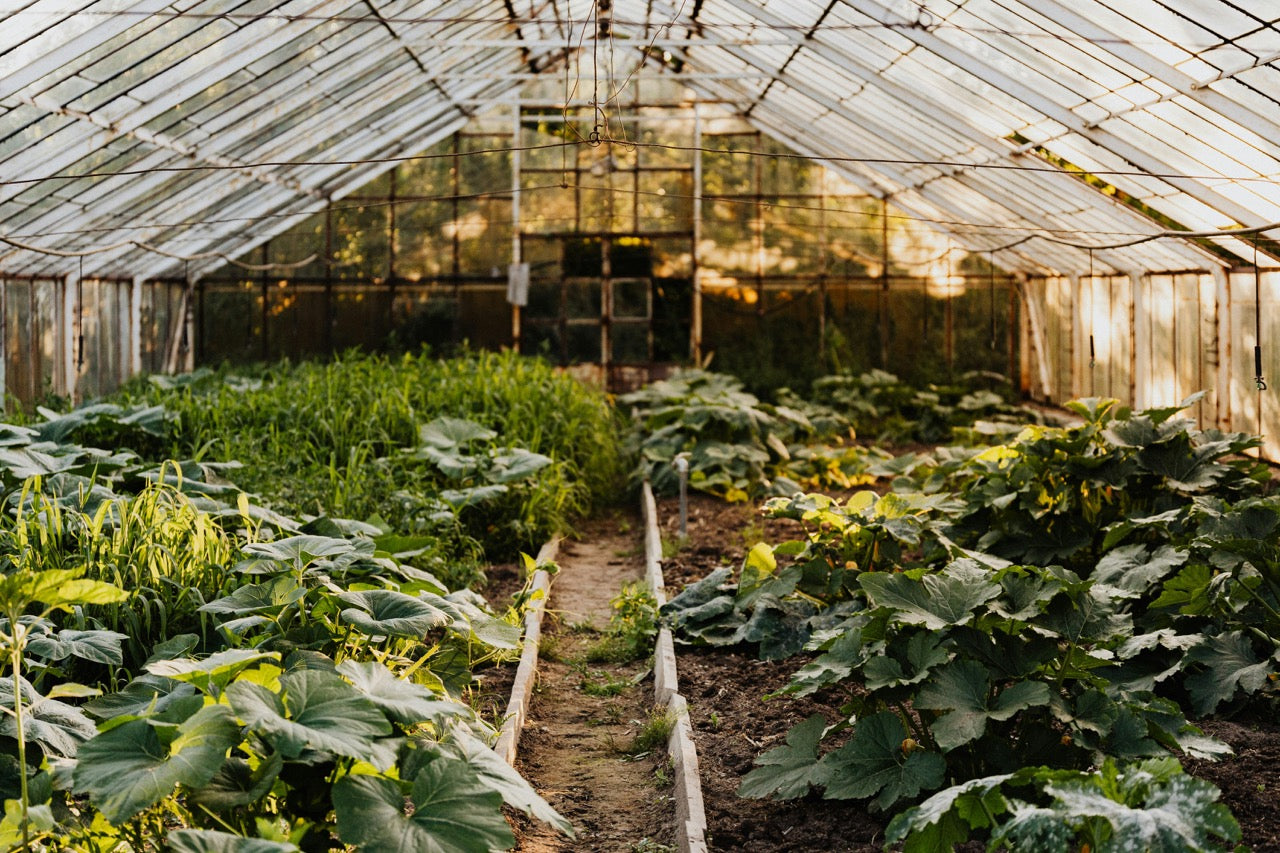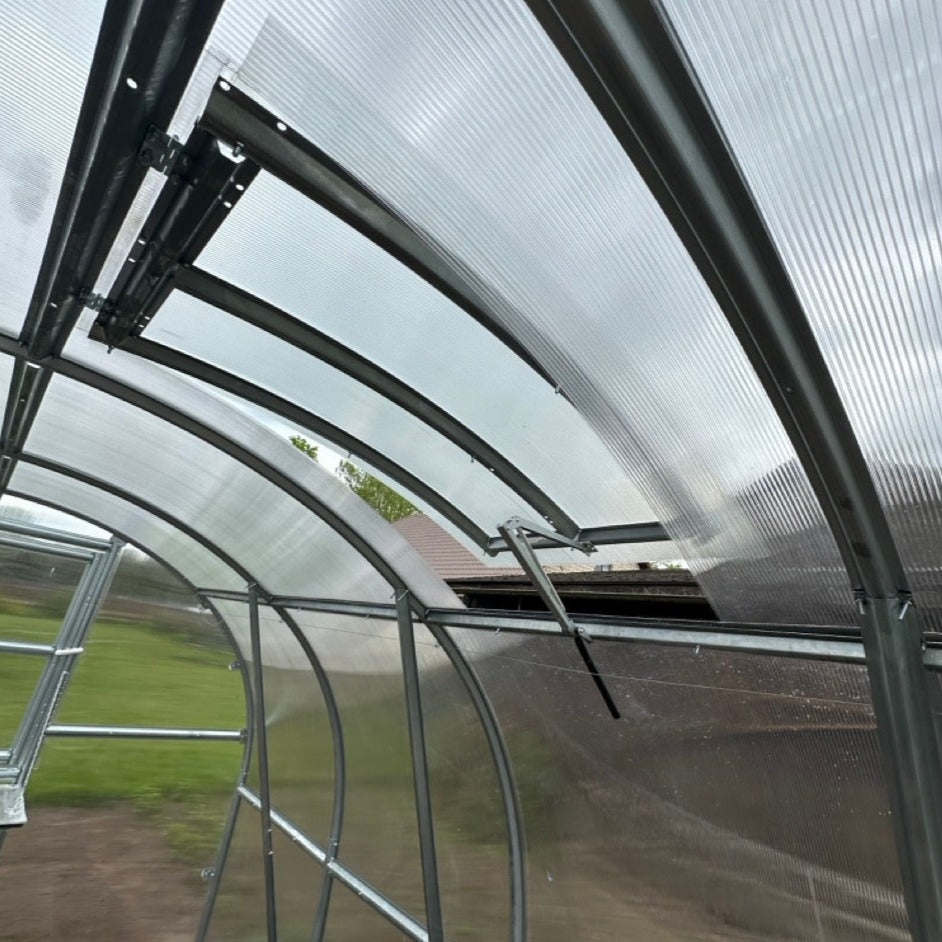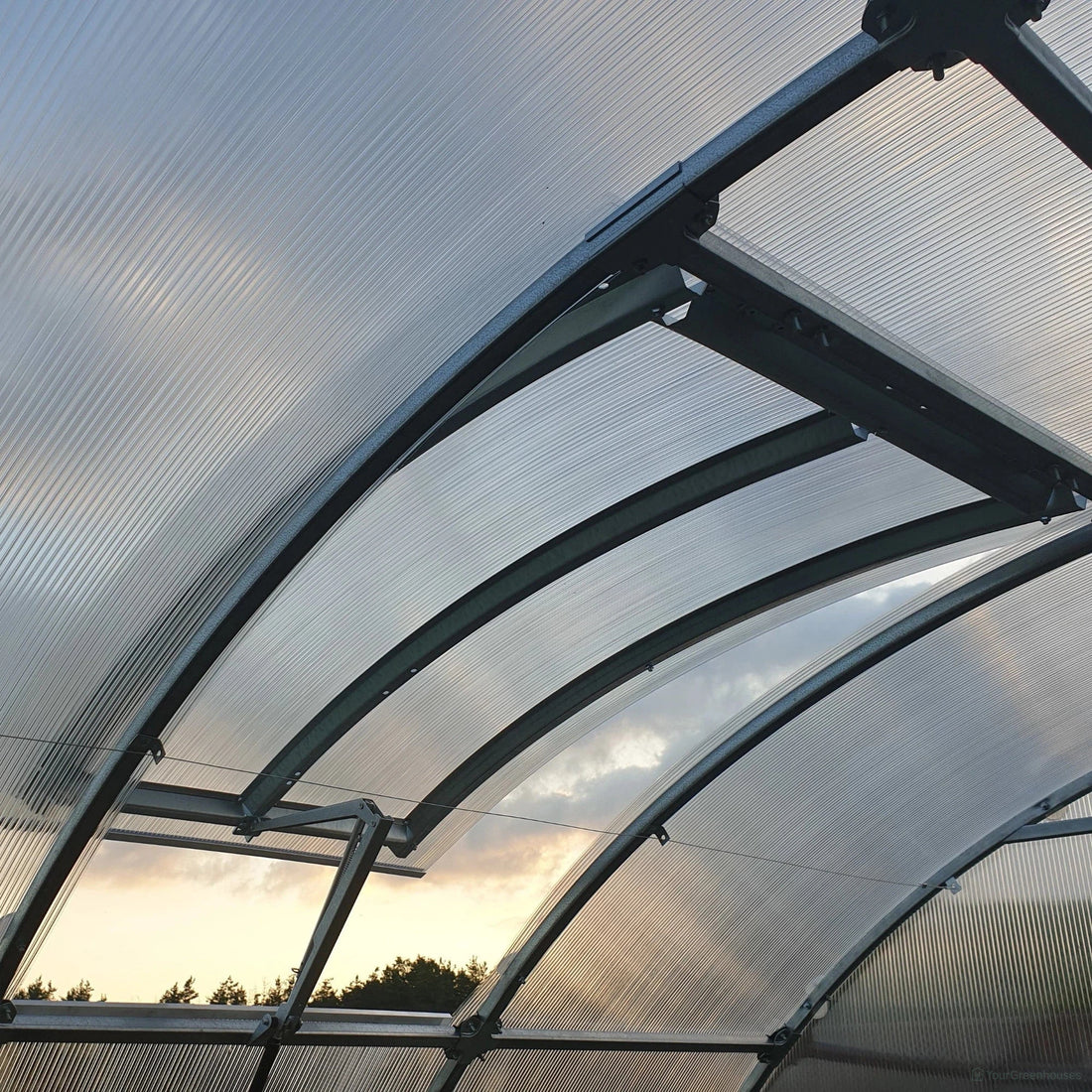Harnessing Natural Heat: A Guide to Heating Your Greenhouse without Electricity
One of the common misconceptions about greenhouses is that get warm and stay warm with little effort. But that's not the case, especially, if you live in cold temperate regions. Most greenhouses will warm up just fine during the day, but it’s easy to lose all of that at night.
Now, during extreme temperature fluctuations, maintaining a warm and nurturing environment in your greenhouse is crucial for the health and vitality of your plants.
But with the rising cost of electric bills and environmental concerns, most gardeners are now exploring alternative ways to heat their greenhouses.
Join me today, as I show you innovative and cheaper ways to heat a greenhouse without electricity. In our guide, I’ll share with you easy ways of how to heat a greenhouse off-grid.
Harnessing Solar Energy
One of the effective ways of heating your greenhouse without electricity is through solar energy. The sun is the most potent form of heat energy and is freely available, day in and day out.
Unfortunately, the energy from the sun has its share of limitations, and can't always be relied upon. For example, during cloudy days, or during the winter season, reliance on solar energy isn't usually practical.
The good news is there are a couple of other ways you could use to heat your greenhouse without electricity.
In the section below, we shall explore the top five methods of heating a greenhouse off the grid.
5 Ways to Heat Your Greenhouse Without Electricity
1) Employ Greenhouse Insulation
The biggest concern when heating a greenhouse is the inherent heat loss and this is because greenhouses themselves are usually not well-insulated.
Our advice, therefore, is to figure out ways to insulate your greenhouse better, which helps to trap the warm air inside and prevent cold air from seeping inside.
Here are some of the methods you can incorporate to help with greenhouse insulation:
· Inspect and Seal your Greenhouse
The first step in thegreenhouse insulation process is sealing the cracks and gaps that could allow cold air to seep inside. Weatherproof materials such as tape or silicone caulk are great for this.
In addition to sealing the cracks, consider lining the exterior of your greenhouse with hay/straw/mulch to help insulate your plants against the cold wind draft.
Generally, sealing the cracks is an effective way to retain heat as it keeps the warm air inside, and stops the cold outside air. While the task requires some elbow grease, it's a rewarding endeavor and will result in a warmer space for your plants.
· Insulate the Greenhouse Structure
Your best bet when insulating your greenhouse structure is to add a second layer of glazing materials such as polycarbonate, acrylic wall sheets, and windows.
Double-glazing the greenhouse materials traps leaves an air gap between them, which acts as insulation against the cold air.
· Use Thermal Blankets
You can also achieve greenhouse insulation by using thermal blankets such as bubble wraps or greenhouse quilts.
Thermal blankets are placed over the greenhouse at night to create an additional layer of insulation and trap heat inside. They create an additional barrier between the inside and outside of the greenhouse. During the day, the thermal blanket can be removed to allow sunlight in.
2) Use Thermal Mass Objects
The second way to heat your greenhouse without electricity is through thermal mass objects. Thermal mass is the ability of an object to absorb, hold, and release heat.
We can see examples of this all around us. For example, you’ve probably walked barefoot on a concrete sidewalk before, in the middle of summer and burned your feet because it was so hot.
Concrete is a good example of a thermal mass object, and this is why you should seek to install concrete pavers inside your greenhouse. Gravel is also effective; the rocks will absorb, retain, and release heat for greenhouse-warming purposes.
But the most efficient mass you can put in your greenhouse is water. Water acts as a heat sync during the day, and will radiate the heat out at night.
Depending on the size of your greenhouse, local weather, and other conditions, you could have something like 55 gal of water drums or buckets sitting in your greenhouse. The water will absorb heat, especially during direct sunlight, and give it off slowly during periods of low light.
Of course, heat sinks aren’t enough by themselves and aren’t miracle workers. But the buffering effect they provide will at least cut down on the energy needed and supplement the earth’s natural heat.
3) Harness the Power of Compost Heating

Composting can be a great way to generate heat for your greenhouse. The way composting works is as organic matter breaks down; it produces heat as a byproduct. This natural heat can be harnessed to warm up your greenhouse.
There are several methods to creating a composting pile for your greenhouse, but the most common is mixing brown" and "green" materials.
Brown materials include things like dry leaves, straw, and wood chips, while green materials include things like grass clippings, kitchen scraps, and manure. Layer these materials in a pile and keep it moist, turning it occasionally to help it break down.
As the compost pile decomposes, it generates heat. You can use a thermometer to monitor the temperature and adjust the size and composition of the pile as needed to maintain the desired temperature.
We also recommend running water pipes, or copper pipes through the compost pile to circulate the air or water through them. This can transfer the heat directly into the greenhouse.
4) Use Geothermal Heating
Geothermal heating is the extraction of heat from the ground. It takes advantage of the stable temperature beneath the ground to keep your greenhouse warm.
The geothermal heating systems usually recover this energy from the ground and convert it to heat that can be used in greenhouses.
There are several ways you can implement this technique, but here are the most common:
- Sink your greenhouse: Sinking your greenhouse in a pit, ideally eight feet deep, below the frost line will tap into the earth's warmer temperature and help moderate your greenhouse's internal temperatures.
- Underground pipes: Bury pipes with deep air vents underground within the greenhouse, circulating air through them. As the air passes through the warmer ground, it absorbs heat, creating a natural heating system.
5) Passive Solar Techniques

Another efficient way to heat a greenhouse without electricity is by harnessing the power of the sun. Passive solar heating relies on maximizing sunlight exposure during the day and retaining the heat throughout the night.
Here’s how to achieve this:
· Orientation and Design
The orientation and design of your greenhouse can also impact its ability to heat itself passively.
For example, if you're a gardener in the Northern Hemisphere, it would make much sense to orient the greenhouse to face south so that it receives the most sunlight throughout the day. The north side of the greenhouse barely receives any sunlight in winter, so you might as well cover it with insulation.
· Consider the Lighting
It’s also important that you install large windows or use transparent materials for the walls and roof to allow more sunlight to enter your greenhouse.
· Use Reflective Surfaces
Reflective surfaces can be used to reflect sunlight and heat back into the greenhouse. This can be achieved by using reflective insulation materials such as aluminum foil or Mylar.
These materials can be attached to the walls or ceiling of the greenhouse to reflect the sunlight in the greenhouse.
It is important to ensure that the reflective surface is clean and free of dust or debris to maximize its effectiveness.
Other Tips for Heating Your Greenhouse without Electricity
Divide your Greenhouse
Depending on the types of plants in your greenhouse, you could opt to divide your greenhouse into zones for easier heating. Clear plastic sheets and insulated curtains make it easier to divide your greenhouse into “rooms”.
A big benefit of subdividing your greenhouse is you can provide warmth where it’s needed most. It’s great when you’ve young seedlings or tropical plants that need more delicate care during the winter season.
Proper Ventilation
Ventilating your greenhouse may seem like a counter-intuitive measure when trying to heat your greenhouse, but it's helpful. You see, good ventilation prevents humidity buildup, helping to control temperatures.
Ventilation systems such as vents and louvers can circulate air and remove excess dampness.
Add an Animal Hutch
If you’ve small farm animals, you can put them to work in your greenhouse. Setting up a pet rabbit habitat in your greenhouse is a cheap way to heat it. The pets generate body heat, which radiates and takes the chill off the greenhouse air. The rabbit might like it too.
Frequently Asked Questions
What Are Effective Methods To Keep A Greenhouse Warm Naturally?
There are several natural ways to keep your greenhouse warm, including using insulation, thermal mass, and passive solar heating.
Insulation can be added to the walls and roof of the greenhouse to trap heat inside, while thermal mass, such as water barrels or bricks, can absorb heat during the day and release it at night.
Meanwhile, passive solar heating involves positioning the greenhouse to face south to maximize sunlight exposure.
Can You Use A Gas Heater To Maintain Temperature In A Greenhouse?
Yes, a gas heater can be used to maintain temperature in a greenhouse. However, it is important to ensure that the heater is properly vented to prevent the buildup of harmful gases. Additionally, gas heaters can be expensive to operate and may not be the most sustainable option in the long term.
Are Heat Lamps Viable Options for Warming a Greenhouse Without Using Electricity?
Yes, heat lamps can be a viable option for warming a greenhouse without using electricity. However, they can be expensive to operate and may not be the most sustainable option in the long term. Additionally, it is important to ensure that the lamps are properly positioned to prevent damage to plants.
Conclusion: Cheapest Way to Heat a Greenhouse
Heating a greenhouse without electricity is feasible and environmentally friendly. By tapping into natural heat sources such as solar energy, geothermal heat, and heat composting, you can create a sustainable and cost-effective system to keep your plants thriving year-round.
Experiment with a combination of these methods to find the best solution for your specific greenhouse setup, ensuring a greener and more energy-efficient approach to gardening.












